How to make DIY scrapbooking flowers?

Scrapbooking is a relatively new hobby for needlewomen. The name comes from the English words scrap and book, which can be translated as a book with clippings. This art form is used to create and decorate postcards, albums, babybooks and other hande-made products. The most commonly used element of scrapbooking decoration is flowers, but, unfortunately, the store's selection of ready-made flowers is small, and it can be very difficult to find the right elements.
Fortunately, such decoration elements are very easy to create with your own hands from scrap materials, limited only by your own imagination.
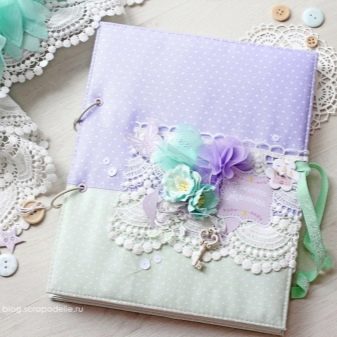
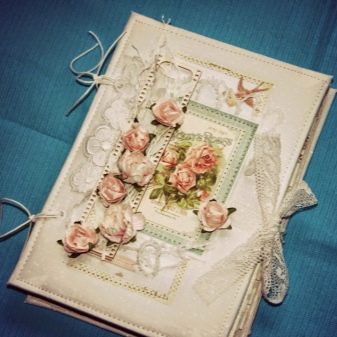
Necessary accessories
There are a lot of techniques for creating flower decor for any hobby. At the same time, different materials are used, starting from ordinary paper with a high density and ending with fabrics. First, you need to decide on the choice of the flower that you want to recreate: roses, violets, lilies, chamomile or any other flower, even non-existent in nature.
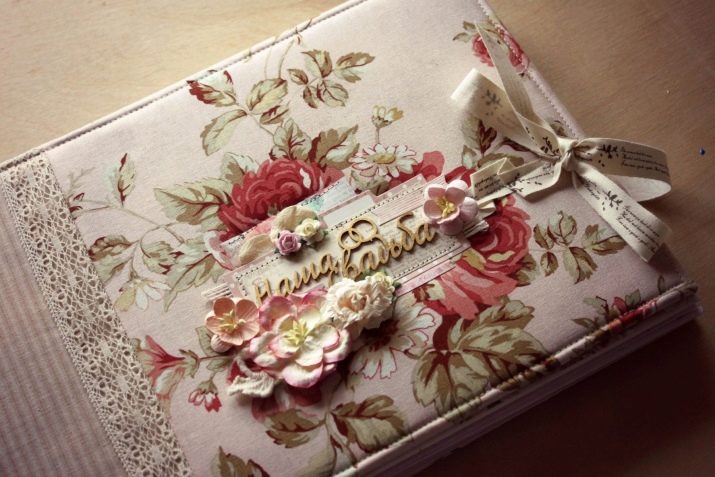
To work, you will need a number of necessary tools and materials.
- Scissors or cutter. The cutting tools must be fairly sharp to create the correct petal shapes. When cutting out parts, the smoothness of the lines and the absence of paper deformation during cutting are very important. It is desirable to have scissors of different sizes so that it is convenient to cut large and small parts. Instead of a cutter, it is better to use a breadboard knife designed for small jobs.
- Scrap paper (if you make flowers out of paper). It is better to take thick paper for watercolors or pastels. The choice of paper is very wide, you can choose colored or white paper for your work.
- Textile (to create fabric flowers).The choice of fabric is limited only by your imagination, but most often they use a light fabric that will not weigh down the overall composition (chiffon, nylon or silk); in some techniques, felt is used.
- A container with water and napkins at will. Many craftswomen advise soaking paper petals in warm water. This gives realism to the flower, and also with light coloring of the petals, thanks to wet paper, a beautiful beading effect will appear, which will make the flower visually softer.
- Paints. Watercolor works best for scrapbooking, but gouache can also be used. They paint in flowers mainly the edges of the petals, or use the ombre technique to create smooth color transitions on all surfaces of the flower.
- Sponge. When using paints and to create smooth color transitions, it is better to use a sponge that is dipped in the paint slightly diluted with water, and is applied to the petals with light movements - smooth over the entire surface or intermittent from the edges. On one side of the sponge, you can combine different shades, the sponge will provide a smooth transition of colors.
- A sculpting stack with a round end. You can also purchase special blooms for flower arrangements, or take any other tool with a ball-shaped end. Such tools will help to bend the petals, give them volume.
- Various beads, rhinestones. They are used to decorate the middle of a flower. The center of the flower can also be decorated with paper or fabric.
- Glue. Adhesives can be bought in a narrow direction, there are many of them. But many people use conventional adhesives, such as instant glue "Moment". For bulky parts, it is best to use pistol glue, which can be purchased at any handicraft or fabric store, the only drawback of such an adhesive base is its instability to mechanical stress.
- Curly and border punches. There are a huge number of figured hole punches, choose the pattern or shape you like and decorate and cut beautiful petals.
The curb punch performs the same function, except that the patterns are cut from the edges, it can be used to decorate the edges of the petals, making them original.
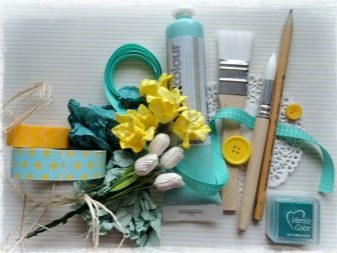
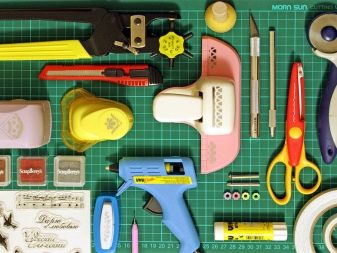
Methods of creation
There are different options for creating flowers for scrap products, it is worth considering simple options using the minimum number of tools.
Materials for making flowers can most often be paper and fabric, as well as threads and yarn.
To get simple beautiful scrap flowers, it is enough to cut out five or more petals, in this case, the petals should differ from each other in size, the first petals are made larger and gradually shrink towards the center. You can put a bead in the center, or you can also cut the center out of paper. The petals, in turn, need to be bent towards the center, which can be done by hand, use a thin stick (such as a toothpick), or soak the petals in warm water and use a stack with a rounded end.
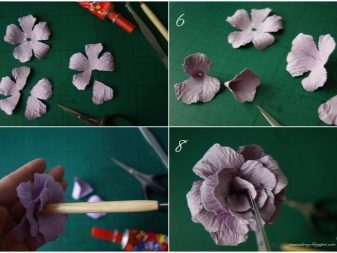

- Rose is the most common flower in scrapbooking. Consider a simple master class for creating such a product. This will require colored watercolor paper. You need to draw a spiral on it, square in shape (in the shape of paper), the most difficult part of this technique is removing straight lines. You need to cut this spiral with rounded ends, so that right angles do not remain anywhere, to recreate the shape of the petals.
The workpiece, cut in a spiral, crushing the edges in your hands, is collected in a bag. As a result, you have a rose, you can add a green cup to it, if you wish, a stalk, twisting a thin rectangle of the length you need into a bag. It turns out a very pretty and simple rose in execution.
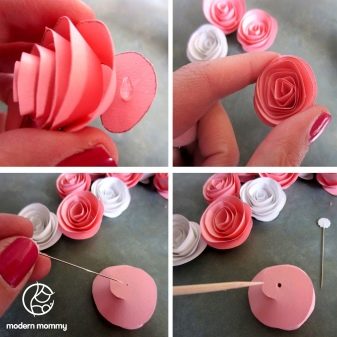

- Royal rose. Another way to create this noble flower from watercolor paper. To do this, we make 6 blanks on paper, 2 of which should turn out to be larger in size than the rest. Each piece should have five petals.After you have cut out all the petals, you can paint them with a sponge, creating more natural iridescent shades, then they will need to be rounded off, for this task you can use a regular toothpick.
Then all the blanks and petals need to be glued to each other, now you can use the rose for scrap products, it is ready.
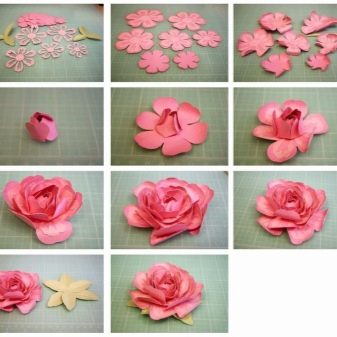

- If you know how to knit, and are friends with threads and knitting needles, then for decorating postcards or covers of books and notebooks you can use knitted flowers.
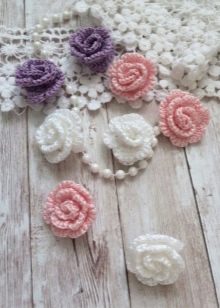
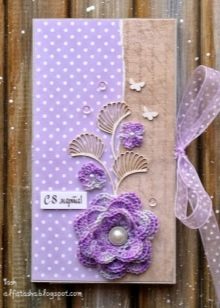
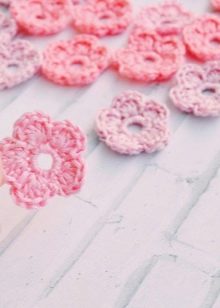
- Flowers from foamiran. This material was created specifically for decoration, it has a foamy base and is able to give flowers a very natural look. The only difficulty of this material is in gluing, ordinary adhesives do not glue foamiran or, in other words, plastic suede; hot melt glue or special adhesives are suitable for it.
There are 20 to 24 colors of this material, it is sold in sheets and can replace acrylic paper.
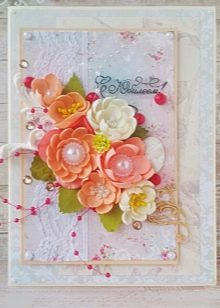
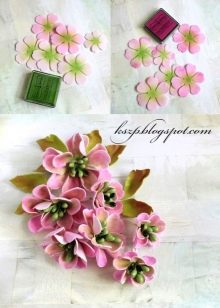
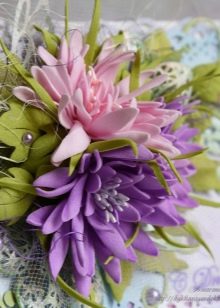
- Fabric flowers. For the manufacture of such products, you will need lightweight fabrics, for example, chiffon. You will also need a candle, fabric glue, or thread and a needle. Petals and blanks for a flower are cut from the fabric material you have chosen, the edges of the products will need to be burned a little, they will become rounded and will not bloom in the future. Next, connect the cut and fired blanks with each other and you can sew a bead in the center.
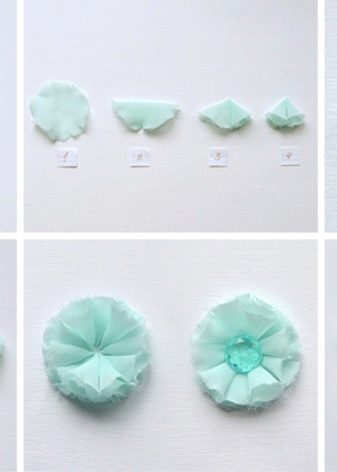
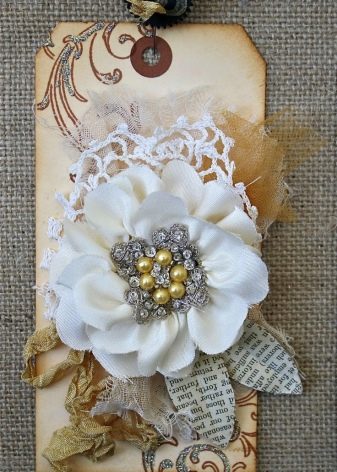
- Flower arrangement in the quilling technique. This technique is based on glued curled paper. To do this, you need to cut the paper into strips and twist it in such a way (in a spiral) so that at the end you get the shape of a drop, then these drops are connected to each other with glue, and in the center it is twisted in the same technique, but a round stigma flower.

- If you don't have professional paper at hand, but you need a flower here and now, you can also use an old newspaper or thick napkins. Be very careful if you decide to make a flower from a napkin, the material is very delicate and can tear.
Napkins should not be soaked in water or painted.
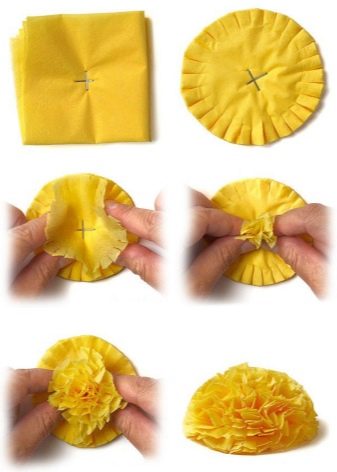
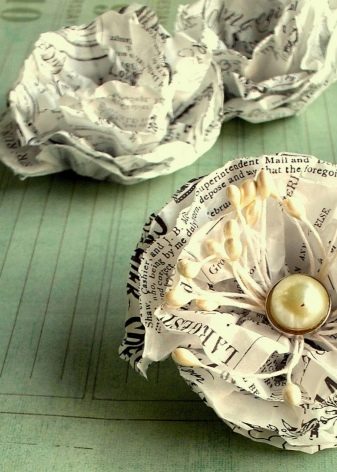
General recommendations for manufacturing
If you decide to create a handmade flower, it is important for you to know some of the nuances. Of course, in the process you will find a technique that is convenient for you and your own subtleties, but some mistakes can be avoided by reading the recommendations.
- Be careful when painting blanks with a sponge. A large amount of paint can ruin the shape of the workpieces or give too intense a color; it is enough to lean a wet dyed sponge against the workpieces a couple of times to get the desired delicate color.
- If you decide to paint your workpiece with pencils, then you should grind the scraped neck on a petal, and not try to draw something by hand.
- Despite the fact that paper is a plastic material, this can sometimes be difficult. It can be made more flexible by making light, inconspicuous cuts around the edges you are trying to bend.
- If you don't have professional tools at hand, you can use the helpers. For example, to create the shape of a flower such as a rose, it is enough to take a ruler with different holes, and while still wet, place the blank in the hole of the required diameter and wait for it to dry. The diameters on the ruler should alternate from smallest to largest.
- To create believable stamens, it is enough to use PVA glue and semolina. To do this, the edges of the thread twisted on a wire are alternately dipped in PVA glue, and then in groats, thus the effect of natural stamens is obtained.
- Before creating a decorative flower, it is worth looking at photographs of real flowers in order to better understand the color renditions and make the fake look more natural. For example, most flowers are darker towards the center and lighter towards the petals.
- The perfection of the flower can be betrayed by a green base.
- The last and the most important rule is that the smoother and more uneven the lines of the petals, the more natural it looks.
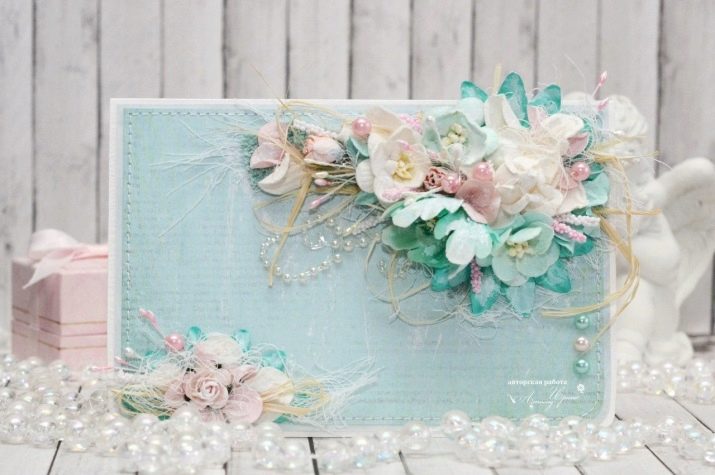
For information on how to make flowers from foamiran, see the next video.








